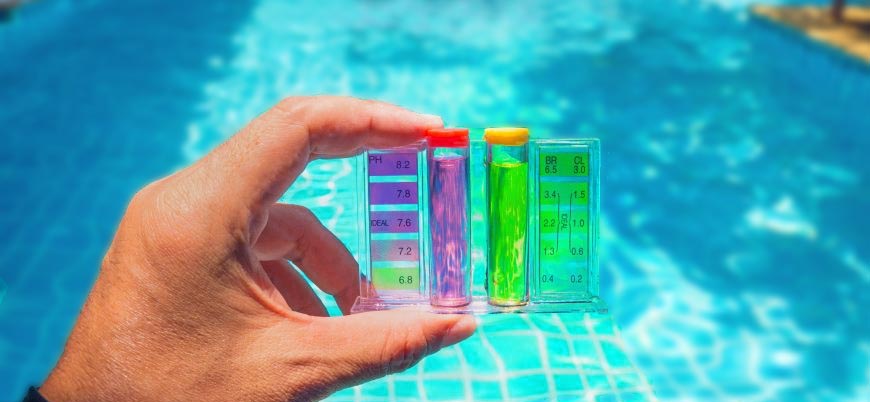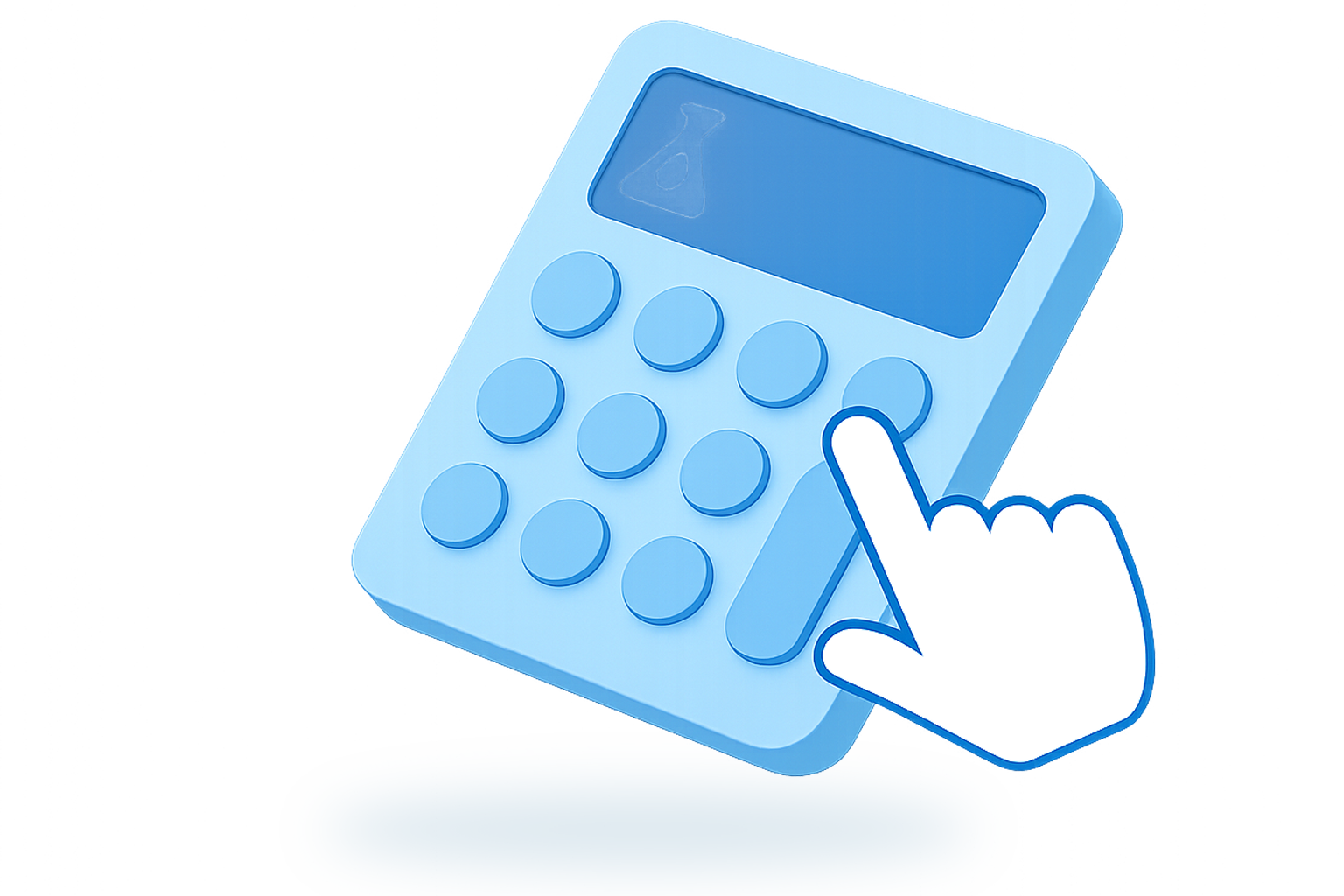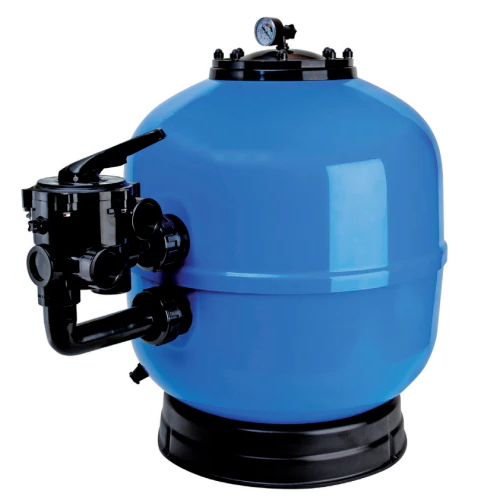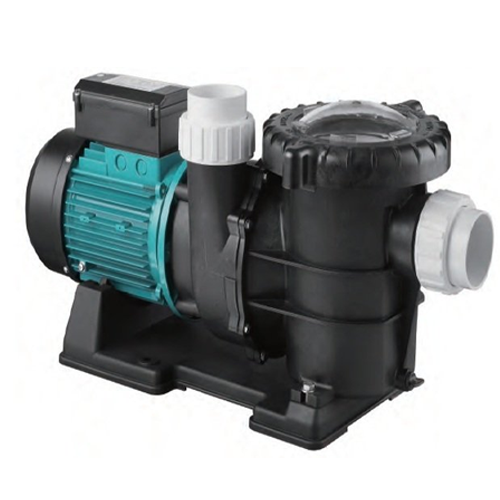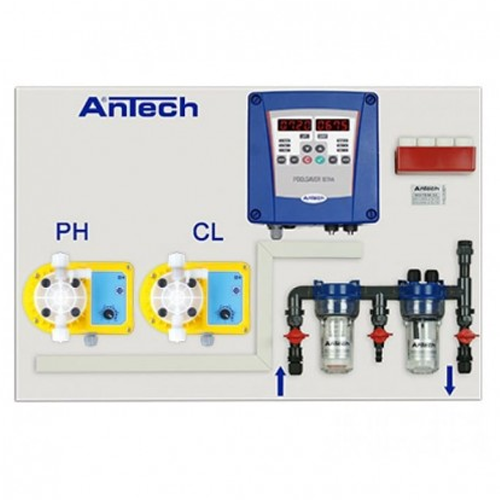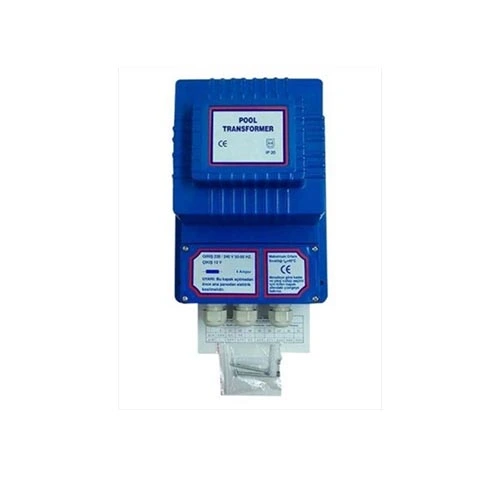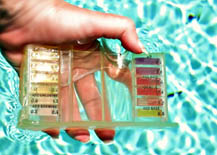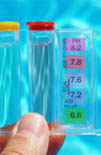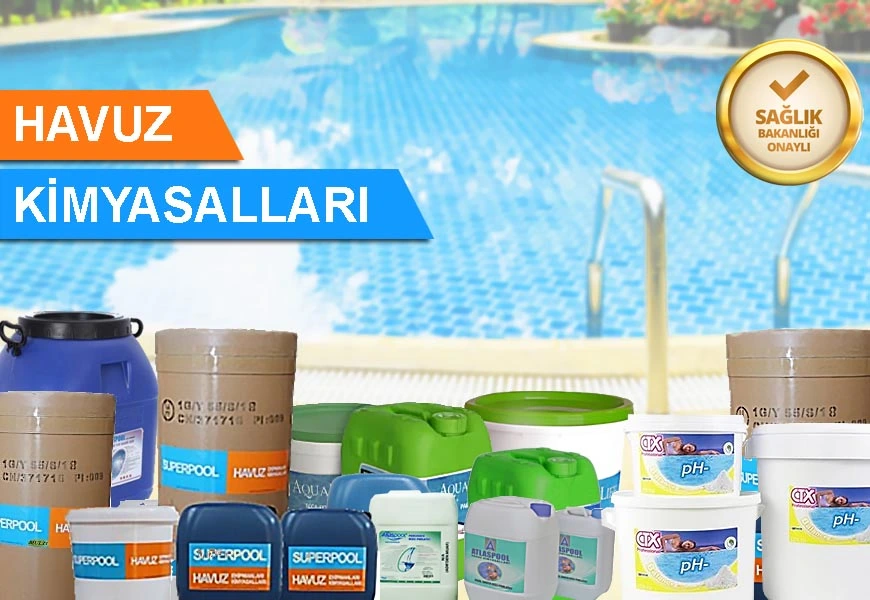Pool Cleaning:
To prepare the swimming pool for the season, the water remaining from the winter months should be drained completely. Then, the pool should be rinsed and washed with clean water. The surface coating should be brushed with diluted acid using a soft brush.
During this process, occupational safety rules must be strictly followed. Do not perform this operation without gloves, boots, or goggles. After cleaning the surfaces with acid, rinse them thoroughly with clean water as soon as possible to prevent damage to the grout. After cleaning, any remaining acidic or dirty water in the pool must be completely drained.
Then, an algaecide should be applied to the pool walls using a brush. Depending on the air temperature, wait for the algaecide to dry (recommended: 1 day) before filling the pool with clean water.
The filling water must be of potable quality. If the well or tanker water you plan to use contains high levels of iron, manganese, or lime, it may cause problems. Since it may be necessary to empty and refill the pool, we recommend using municipal water to ensure consistent quality.
Pool Chemical Values:
The amount of chemical to be used depends on the volume of the swimming pool. To maintain the chemical balance, there are five main pool chemicals. Depending on environmental factors and water composition, additional special-purpose chemicals may occasionally be required.
The basic pool chemicals are as follows:
- pH Reducer
- Chlorine
- Flocculant (Coagulant)
- Algaecide
- Clarifier (Polisher)
In addition, even in pools equipped with an automatic disinfection system, a test kit capable of measuring pH and chlorine should always be available for control and verification purposes.
Recommended water parameter values for swimming pools:
- pH: 7.2 – 7.6 (Ideal: 7.4)
- Redox: 650 mV – 750 mV (depending on usage)
- Free Chlorine: 1.0 – 2.0 ppm (max. 3 ppm)
- Combined Chlorine: max. 0.7 ppm
- Total Hardness (as CaCO3): 100–500 ppm
Fresh make-up water should be added daily at approximately 30 liters per person.
How to Use Pool Chemicals:
When putting the pool into operation for the first time, the pH balance must always be adjusted first. After the pH level is set to the ideal value (7.4), the chlorine level should be adjusted. In pools controlled with a test kit, the ideal chlorine reading should be around 1.0 ppm.
When the pool is first commissioned, check the pH level using a test kit.
Daily, the pool water should be tested regularly with a test kit to ensure that the chlorine and pH values remain within normal limits. If necessary, dose the required amount of chemicals to bring the values to the ideal range.
The following chemical usage amounts are given as examples for a 100 m³ swimming pool. Adjust the dosages according to your pool volume.
Chemical Dosage Rates for a 100 m³ Swimming Pool
The given values are approximate. The pool’s architectural design, number of users, and environmental factors may increase the chemical consumption.
First, measure the pH level with a test kit. The ideal pH value should be 7.4. Unless affected by specific water composition, the pH level is likely to be high and must be reduced before start-up.
Important Warning: In liner-coated or inflatable pools, using granular chlorine or granular pH reducer may cause bleaching or discoloration on the liner where the chemical is applied.
To extend the lifespan of liner materials, use chlorine tablets or liquid chlorine in the skimmer basket, and prefer liquid pH reducer instead of powder forms.
In pools with automatic disinfection systems, manual application of chlorine or pH reducer is only required during shock chlorination, since normal dosing is handled automatically by the system.
All pool chemicals must be approved by the Ministry of Health. Reviewing the MSDS (Material Safety Data Sheet) for each product is an important indication of chemical reliability.
pH Reducer: To reduce the pH of a 100 m³ pool by 0.2 units, dissolve 1–1.5 kg of product in a bucket of water and distribute it evenly around the pool. Run the system for 3–4 hours and recheck the pH. Repeat as needed until the ideal value is reached. Once balanced, proceed with chlorine adjustment.
At the first start-up, chlorine is not yet present, so testing is unnecessary. After setting the pH to 7.4:
Chlorine: For initial filling, dissolve 1.0 kg chlorine per 100 m³ in a bucket and distribute evenly. Then, apply 200 g chlorine daily per 100 m³ in the same way.
If the pool system has an automatic disinfection unit, instead of daily manual dosing, add liquid chlorine to the chemical drums. The system will automatically maintain the correct chlorine level.
After pH and chlorine levels are set, the other chemicals may be added to the pool water.
Flocculant: Add 1 liter per 100 m³ once a week to the balance tank or directly to the pool if no tank exists.
Algaecide: For the first fill, 1.5 L per 100 m³; thereafter, 0.6 L per 100 m³ weekly on the pool surface.
Clarifier: For the first fill, 1.0 L per 100 m³; thereafter, 0.6 L per 100 m³ weekly on the pool surface.
It is recommended to test the pool water with a test kit every other day during operation. Maintaining pH and chlorine within ideal ranges is crucial for a healthy pool.
Liquid Chlorine Use: Liquid chlorine is supplied ready to use in containers. In systems with automatic disinfection, pour the product into the chemical drum, then top up the remaining space with water. Liquid chlorine eliminates bacteria, fungi, and microorganisms in the pool. The active chlorine concentration is approximately 12–14%. The automatic system will dose as needed and stop once the desired level is achieved.
Liquid pH Reducer Use: Liquid pH reducer is also supplied ready to use. Pour it into the chemical drum in the machine room and fill the rest with water. It is a diluted inorganic acid that helps lower pH, allowing chlorine to act more effectively. The automatic system will dose as necessary and stop once the desired value is reached.
Note: For best performance, keep pool pH between 7.0–7.2. If 90% granular chlorine is used, measure CYA (cyanuric acid) levels regularly.
Using the Test Kit
After opening the test kit caps, rinse the cells thoroughly. Then take a water sample from a depth of approximately 50 cm. Test kits may contain tablets or liquids. For tablet types, place one tablet in the pH compartment; for liquid types, add about 5 drops, close the cap, and shake. Then, compare the water color with the chart to estimate the pool’s pH level.
